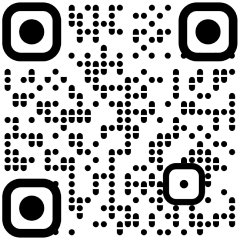India’s stock market is set to usher in the T+0 settlement system from today, making it among the handful of countries to implement the shorter trade settlement cycle. To start with, a ‘beta version’ will be implemented to ensure the smooth functioning of the shorter settlement cycle before its full-fledged launch. Nishanth Vasudevan and Kairavi Lukka explain the new settlement system:
What is the T+0 settlement?
In the T+0 system (T refers to the day of the trade and 0 is the day of settlement), trades done in shares will be settled on the same day. This means shares will be transferred to the buyer’s account and the funds will be deposited in the seller’s account on the same day of the trade. Currently, India follows the T+1 cycle, which means trades are settled by the next day.
What is the ‘beta’ version of the shorter settlement cycle?
It is a pilot project under which exchanges will launch the system on an optional basis in addition to the existing T+1 settlement cycle in the cash market. This means both settlement cycles will co-exist. The same-day settlement will be available only for 25 stocks and only a limited number of brokers can offer this facility. Additionally, the trading session for T+0 stocks will be from 9:15 AM to 1:30 PM.
How does the new system help investors and traders?
A shorter settlement cycle on full implementation is aimed at making the system more dynamic. Since funds will be available on the same day of selling, it is expected to improve liquidity, allowing traders to use cash better. “One of the biggest successes of the T+0 system for retail traders will be if they receive funds on the same day and are available for the next day’s trading,” said Jimeet Modi, founder of Samco Securities. Brokers said even in the current T+1 settlement, there have been various instances of investors receiving funds late, beating the purpose of a shorter cycle.
What does this mean for brokers?
For brokers servicing retail clients, survival of the fittest will be the order of the day, said Gaurang Shah, senior vice president at Geojit Financial Services. “Clients will look at brokers who can manage their finances and pass on all the benefits and enhanced limits for the scrips to them,” said Shah. Once fully implemented, it could also lower their funding requirements. “A shorter settlement cycle will be good for brokers in terms of reducing working capital requirements,” said Modi. “When trades are settled early, our funds will also be released by the exchanges earlier.” In the temporary optional system, brokers are hoping that there are no operational challenges, especially in the reconciliation of trades.What are the challenges that institutions will face in the shorter settlement cycle?
Institutional investors, mainly foreign funds, could face the biggest challenges in the T+0 system. Unlike retail traders, who bring in money before their trades are executed, large funds operate differently. Same-day settlement for these investors would mean bringing in larger sums in advance, exposing them to currency risks. Brokers said foreign investors will have to cough up money at least a day before the trade, considering the time zone differences. Additionally, the process is done through intermediaries like custodian banks, foreign exchange banks, and brokers. When Sebi decided to cut the trade settlement cycle to T+1 from T+2 in 2023, overseas fund managers opposed it the most.
How has the stock trade settlement cycle in India evolved?
After following a T+5 settlement cycle, India moved to T+3 in 2002 and further reduced it to T+2 in 2003. In 2021, Sebi introduced the T+1 system before making it the norm in 2023. The regulator has also set its sights on instant trade settlement.
How are stock trades settled in the rest of the world?
Most markets worldwide still follow the T+2 stock trade settlement system. For instance, the US is scheduled to shift to the T+1 on May 28. The European Union may also follow suit and will look at how the shorter settlement cycle plays out in the world’s largest securities market. In Asia, China offers T+0 settlement, while most other markets are still in the T+2 mode.










